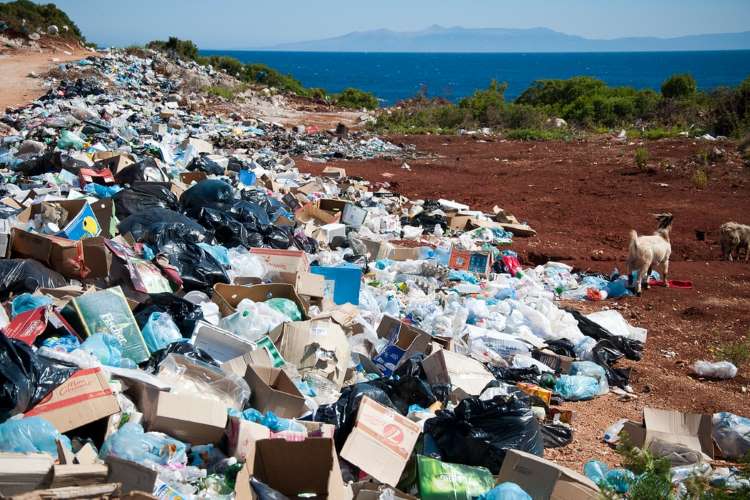India has taken a big step towards curbing plastic pollution by announcing a ban on single-use plastics from July 1. The Central Pollution Control Board (CPCB) had, earlier in the year, notified producers, shopkeepers, street vendors and the general public about the ban. Whether this move will make a considerable impact is to be seen. Plastic pollution is not just a problem for India alone, but a gigantic global concern, especially after the coronavirus pandemic that resulted in a huge jump in plastic usage.
As the name suggests, single-use plastics are those products that serve only one-time use before they are thrown away. Most often than not, these kinds of plastics are not disposed of properly, therefore not recycled. This includes a wide range of products such as plastic sticks used in balloons, flags and candy etc, or thermocol used in decoration. Daily use items such as plates, cups, glasses and cutlery, wrapping and packing films used in food, invitation cards, cigarette packets, stirrers and plastic banners less than 100 microns in thickness are banned from July 1, reads the government notification announcing the ban. With the ban, plastic bags of thickness less than 100 microns will also be phased out.
Plastic pollution explained in numbers
India is the second most populous country in the world with a population of 138 crore. Naturally, it is also one of the biggest contributors of plastic waste. The country generates around 33.6 lakh tonnes of plastic waste per year, which adds up to nearly 9,200 metric tonnes a day, according to 2018-2019 data by the Central Pollution Control Board.
Also Read: Can AI-designed super enzyme end plastic pollution crisis
Plastic pollution, however, is not a problem specific to India alone. The world has produced about 830 crore metric tonnes of plastics between 1950 and 2015. Of this, at least 80% has become plastic waste with just a negligible 9% is being recycled. Adding to the disturbing numbers is the fact that as much as 79% of the plastic manufactured in the world ends up in landfills or in the environment. Even oceans and other water bodies are now polluted with plastics and microplastics.
Use of single-use plastics and Covid-19
While the world was already battling the rising plastic pollution, the coronavirus pandemic added to the misery. With the pandemic came an increased need for hygiene and a plethora of single-use items became part and parcel of our daily life. The biggest change was the introduction of face masks and the disposable kind remains hugely popular due to frontline workers, delivery services etc. Single use face mask production soared per day in the initial days of the lockdown to keep up with the rising demand.
Then, plastic masks were not the beginning and the end of the mounting woes. Plastic is also crucial in making medical equipment and protective gear and with the pandemic, their use inevitably escalated. This meant an increase in daily plastic waste coming from the hospitals.
Also Read: Marine plastic pollution: World inches towards an agreement
During the peak of the pandemic, India’s six busiest airports started to generate 6,000 kg of bio-medical waste every day from nearly zero before the pandemic. This was due to the use of PPE kits to meet government guidelines for both staff and passengers.
Even in daily lives, plastic usage ballooned. From a renewed vigour for usage of plastic bags, disposable utensils, plastic-coated paper cups, takeout packaging and cutlery on food delivery apps to increased online shopping which meant lots of packaging including bubble wrap, coronavirus worsened the plastic menace. This meant death to go green initiative.
Can the country implement the ban?
As is evident from numbers, plastic waste is one of the biggest contributors to pollution throughout the world. Unlike paper or food waste, plastic just does not decompose which means it will be there in the earth’s atmosphere for thousands of years to come. Also, plastic cannot be burned as it releases toxic fumes and harmful gasses during the process. The leaching of plastic waste into the ground, water sources and more has been linked to the presence of dangerous microplastics. So, apart from recycling, the only solution to reduce plastic pollution is to limit usage.
In a country famous for juggad, it is quite optimistic on the part of policymakers to believe that single-use plastic ban could be a magic formula to end plastic pollution. Considering plastic manufacturers can always find some loopholes to evade the ban. So, in order to reduce plastic pollution, more policies are required to actually make a significant effect. For one, without finding an environment friendly alternative to fall back on immediately, both producers and consumers are likely to fall back on plastics. Lax enforcement of the ban can also lead to the rule only existing on paper.
In fact, this is not the first time that the government has planned a ban. States like Himachal Pradesh and Maharashtra have instituted similar bans in the past, but the results were far from encouraging. Further, industries such as the fast-moving consumer goods (FMCG) are more likely to push back as they depend heavily on plastic goods. Other than such issues, the government also needs to consider the fate of the workers who were employed by the industry whether in the organised sector or the unorganised sector so that the country does not end up creating another monster.

